HOME | ABOUT US | MEDIA KIT | CONTACT US | INQUIRE
HOME | ABOUT US | MEDIA KIT | CONTACT US | INQUIRE
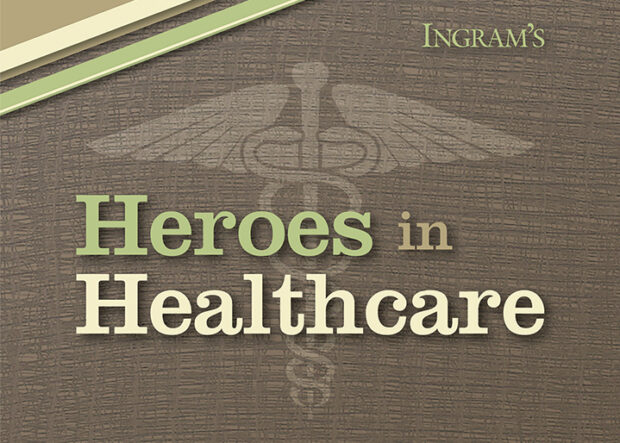
For some, the call to a health-care career started with the impressions left by a mother coming home from work in a spotless white nursing uniform. For some, it continues with a call to serve, to be with patients in what may be their darkest or their loneliest points in their lives—and occasionally, the final hours of their lives. For some, echoes of that call still ring clearly past retirement age because of a sense that the tasks they perform matter more than anything else they could do.
Those are the measures of Heroes in Healthcare: Someone who puts the welfare and interests of others above self, and demonstrates that commitment through the body of their work as administrators, nurses, and professional or auxiliary staff, or through lifetime service and volunteer efforts. You’ll find the qualities of mercy, compassion, competency and care in the stories of each of Ingram’s 2016 Heroes in Healthcare.
These 21 individuals are part of a health-care cohort that helps maintain, restore and safeguard the health of 2.2 million people in the Kansas City region, and countless thousands from greater distances who come here because of the widely regarded level of care available in this market. They join an elite club of previous years’ winners, all of whom have personified the best elements of what our health-care system has to offer.
We salute all of them for their efforts to raise the health profile of the greater Kansas City area.
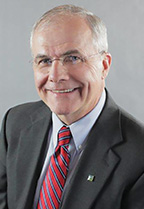 Rob Linderer
Rob Linderer Midwest Transplant Network
Few health-care administrators get to chief executive’s office via nursing school, but Rob Linderer isn’t known for sticking to convention. Before he started his nursing career in 1980, “not many men were in the field of nursing,” he recalls. “In fact I was the only male in my class.” But the work filled a vocational void that he knew was missing as an aviation tech in the Air Force. Nursing, he says, provided an “interaction with people, patients in particular, who at their most vulnerable showed me the meaning of grace and the strength of the human spirit.” And it put him on a path to the cardiovascular ICU at Saint Louis University Hospital, where he became procurement transplant coordinator. Passion took over from there, and he joined the Mid-America Transplant Association in St. Louis in 1986 and moved to Kansas City three years later. In 1997, he became CEO for the network, which works with donors, families and hospitals to facilitate transplants. Since then, Linderer has overseen a doubling in the number of organ donors aligned with the network, and the number of lives saved through transplantation is also up sharply. He’s overseen creation of a tissue recovery program and worked with legislators in both Missouri and Kansas to streamline and promote donation processes. His career has coincided with huge advances in the science of transplantation and clinical improvements in matching recipients to donors, in immunosuppression and the transplants themselves. “The expectation of returned health following transplants now is almost routine, and so different than 20 or 30 years ago,” he says. The father of two sons who also became nurses, he’s also been grateful to see a social shift in the acceptance of organ donation. “Public policy, the health-care system as a whole, and organizations like mine work in partnership to save lives of those in need of a transplant,” he says. “The benefit to individuals and society are tremendous.”
 Terry Rusconi
Terry Rusconi University of Kansas Hospital
Excellence, says Terry Rusconi, starts with an attitude. “I do orientation tours every week with the staff, and I tell them, ‘If you ever think we’re so good that we can just sit back and say we’re done—we are done,’” says the vice president for performance improvement at the region’s biggest hospital. “You’ve always got to figure out how to be better tomorrow than today.”
Rusconi worked for Hallmark and Sprint before signing on at KU in 1997. At that point, it was a financially struggling, state-funded hospital ranking in the bottom 5 percent nationally in patient satisfaction. A year later, it became an independent public health authority, and the transformation was on. “In many ways, I am the luckiest guy in the world,” Rusconi says. “You have very few chances in life to really make a difference like this, to transform an organization and a culture, to help improve the health of individuals and the community, and the ability to help people feel good about what they do.”
Performance metrics now put the hospital in the top 10 percent of all U.S. hospitals, not just academic medical centers, and for that, hospital executives credit Rusconi’s skill in analyzing performance data and crafting successful programs from it. His commitment to compassion, as well as clinical care, was reflected in development of the hospital’s No One Dies Alone program, where employees volunteer to sit with and support patients who are alone in their most vulnerable time, at the end of their lives.
He’s grateful, in turn, for what the hospital has done for him. From the first day there, he says, “it was like everything I had ever done made sense and I knew where I was supposed to be.” But he also knows that the pursuit of excellence is never-ending. “We’ve written an amazing story here,” Rusconi says, “but there are chapters yet to be written.”
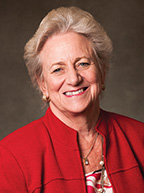 Sheri Wood
Sheri WoodKansas City CARE Clinic
Six years after passage of the Affordable Care Act, an estimated 32 million Americans still lack health insurance, but there’s no shortage of health-care regulation in the U.S. Which is why Sheri Wood, chief executive for the Kansas City CARE Clinic, says that her corner of the health-care world has “radically changed, but it’s still stayed much the same. That’s a crazy statement, I know, but we anticipated that the people we serve, the low-income, would all be eligible for Medicaid” when ACA passed in 2010. When the Supreme Court declared that states could decide whether they wanted to sign on for expansion of Medicaid, Missouri and Kansas opted out. “I don’t think many people,” Wood says diplomatically, “envisioned that the Supreme Court would do what they did.”
Still, she says, the business model for the clinic has undergone dramatic changed. Last year, it became a federally qualified health center, which means that “we’ve had, like everyone else, to put in electronic health records, which we got no federal dollars for, and there are a lot more requirements we have to meet.” And the clinic’s board voted to move toward third-party reimbursement for the first time. So there’s plenty that Wood must do to keep up with a whirlwind of change. She draws on four decades of experience in health-care administration, going back to the mid-1970s, when she helped start Hospice of Chattanooga, in her home state of Tennessee. She and her husband, an Episcopal priest, moved to Kansas City in the early 1990s, and she became executive director at what was then the Kansas City Free Health Clinic in 1996. Back then, it had 18 staff members and an annual budget of about $1.2 million. Today, the budget has grown tenfold, the staff numbers more than 100, and the clinic has tapped into a broad volunteer base of more than 1,100 people. “What drives me every day is making sure people have access to health care and get the care they need and deserve,” Wood says. “That’s been the mission throughout my career; I believe health care is a right, not a privilege.”
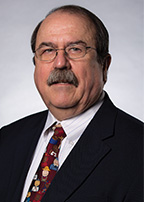 Lonnie Breaux
Lonnie BreauxChildren’s Mercy Hospital
Lonnie Breaux’s This Is Why I Do What I Do Moment came after Children’s Mercy Hospital installed new lobby floors bearing images of whales. “I saw a child laying on the floor, ‘swimming’ with the whales,” Breaux recalls. “He was so happy.” Reflecting on how he became an architect, Breaux says simply, “I always liked building things as a kid.” Now, he’s building things for kids as vice president for facilities management at Children’s Mercy. There, he’s responsible for planning, design, in-house construction, engineering, security, safety and environmental services. Since his arrival there in 1999, he’s credited with coordinating more than $450 million in health-care construction as the hospital has grown dramatically and increased its profile on a national stage.
Breaux earned his degree in architecture from the University of Southwestern Louisiana in 1975, and was immediately thrust into health-care construction for a client company, Baton Rouge General Hospital, in his home town. “Hospitals are constantly changing and growing, and architects have to stay abreast of these to help their clients design for this rapid change and growth,” he says. That’s one reason why he pursued his master’s in health-care administration after joining a Texas health-care organization, where he was responsible for design and construction. When he was approached about the Children’s Mercy opportunity in 1999, he says, “I did a little research and I was hooked. The opportunity to be a part of another growing health-care system dedicated to the needs of children and their families really appealed to me.” His contribution is far more meaningful than mere arranements of brick and mortar. “I get the most satisfaction when I see kids who are not afraid to be here,” Breaux says. “We always consider the kids when we design space and want them to feel safe and comfortable. While we spend time working with providers to design medical space, we never lose sight of the fact that children are in that space, so what can we do to make it more appealing and less stressful for them?”
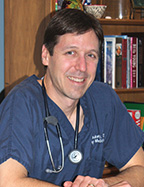 Andy Bukaty
Andy BukatyDocs Who Care
Talk about happy accidents: More than a decade ago, Andy Bukaty was finishing up Research Family Medicine’s residency program and preparing to start work at a traditional medical practice, but the opportunity fell through. “I had been intrigued by Docs Who Care when I heard about it during training,” he recalls, “and rather than jump into another traditional practice opportunity that I wasn’t sure about, I decided I could spend about six months with DWC and allow myself more time to find a better permanent option.” As it turns out, the better option was the short-term gig: More than 10 years later, he’s the medical director for the organization’s emergency medicine operations in Missouri and Iowa. The non-profit provides support for physicians in rural areas, helping reduce career burnout by staffing small hospitals so doctors there don’t have to be available 24/7. “I can’t imagine doing anything else,” Bukaty says. “I love the vision and mission of our company, I love how our providers and staff are treated, I feel like my work makes a real impact in areas that are often overlooked and underserved.” The work, he says, is more suited to his particular skills than he initially imagined and he likes the flexibility and independence provides—especially as a husband and father of two.
And it’s fulfilling, as with the case of an emergency room they helped set up at a rural hospital. One of its first patients was a woman with a severe allergic reaction, and had the ER not been open, Bukaty says, she might have died. That episode, he says, “went a long way toward affirming that my work mattered.” His work also allows him to serve as medical director for Camp Hope, a summer refuge near Claflin, Kan., for pediatric cancer patients and survivors. He visited there at a friend’s urging, and “I quickly realized how much good we do for the children who come and how much it feels like a family to those who have ever attended, either as campers or volunteers,” Bukaty says.
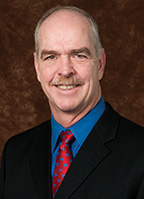 Rick Randolph
Rick Randolph Heart to Heart International
Happenstance? No way, says Rick Randolph: As an Army National Guard doctor stationed near Ashraf, Iraq, in 2004, he meets the only other physician there—Gary Morsch. “Imagine, two Johnson County family physicians, who had never before met each other, meet as the only two physicians in a very strange post near the Iranian border,” Randolph muses. “I don’t believe that it was mere coincidence.”
That’s how Randolph would eventually become chief medical officer for Heart to Heart International, the non-profit Morsch founded to provide health care and humanitarian aid to the poor around the world, especially in disaster-relief roles. Before taking on those duties last summer, Randolph had been around the world as a military officer and a physician. He’s a West Point graduate who earned his medical degree from the University of Kansas School of Medicine.
He left active duty in 1995 to become a partner at College Park Family Care in Lenexa, but remained with the National Guard and continued to deploy overseas with special-forces units. In early 2015, he signed on for a six-week stint with a Heart to Heart Ebola treatment unit in Liberia. When that turned into a six-month obligation, he gave up his panel of patients at College Park, where he still does occasional urgent-care.
An elder in the Grace Covenant Presbyterian Church, Randolph says his faith motivates and inspires him. “For me, faith consists of choosing to answer God’s call to care for those that need our help when there is a more comfortable alternative that I could choose,” he says. “I knew that working with Heart to Heart would best utilize the gifts of experience and skills which I had been given.” His first work with Heart to Heart came after the Haitian earthquake in 2010. “I realized that the skills and experiences I had, in medicine and in the Army, could be best used helping others in the developing world.”
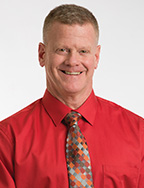 Rob Kinnard
Rob Kinnard Liberty Hospital
Yes, Rob Kinnard works in health care, as an anesthesia tech at Liberty Hospital. But calling Rob Kinnard an anesthesia tech only scratches the surface of this one-man whirlwind. He’s also a philanthropist. A mentor. A coach. A firefighter and Fire Department chaplain, a volunteer, a medical missionary, a Richmond City Council member. He’s even Santa Claus to hospitalized children at Christmas.
But let’s start with the health-care piece. “I was approached by the anesthesia department when the position came open and truly love what I do,” says Kinnard. “I get the chance to interact with patients and to assist in helping anesthesia staff. Surgery can be a time of stress, fear, pain—I want people to feel that they are the most important person on the world and all of our attention is on them.”
It’s an attitude honed by years of engagement in his community, based on values learned from his parents, who raised him and four siblings near Hardin in Ray County. Growing up, he found his identity in basketball, and the sport would be a key to his philanthropy decades later. “I always thought I would be a coach,” he says, “But along the way, I discovered that the values my mom instilled in me, combined with a sport that I loved to play, would fit into reaching people in ways I never dreamed of.” That he does with Camp Kinnard Basketball, a character-building program he started for preschoolers through sixth-graders. He also founded Off the Grid Adventures, working with at-risk youth to develop their leadership skills. Dreams of an NBA career didn’t pan out, but this month, Kinnard is making his 22nd international mission trip, promoting basketball and its values in places like Lebanon (10 trips), Mexico (seven trips), Ukraine, Trinidad, Tanzania and Honduras. “This is where I found my call to share my faith and values through basketball camps, speaking in schools and universities, goodwill tours and humanitarian causes,” Kinnard says.
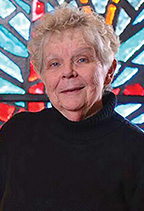 Lillian Ratcliff
Lillian Ratcliff St. Mary’s Medical Center
Free counsel to anyone showing up for a volunteer shift at St. Mary’s Medical center in Blue Springs: You might want to consider wearing earth tones. But if color is your thing, best to avoid combinations of maize and blue. “I attended The Ohio State University and am a BIG fan of Ohio State sports,” declares Lillian Ratcliff, who coordinates volunteer time for the hospital. “There’s nothing prettier than script ‘Ohio’ on a green football field right before Michigan loses again!”
Then again, we’re talking about a woman has been deeply committed to the hospital’s mission since starting there in 1989, so perhaps she’s willing to overlook such sartorial indiscretions. She previously served in the patient-access department, then as the chief executive’s administrative assistant before taking on her current duties, managing more than 100 volunteers. Hospital officials says it’s not unusual to see her there late at night, making sure employees working off-hours can participate in hospital events or special offers at the gift shop.
Hers is a passion born of practicality: “Health care is a field that allows you to work almost any time of the day or night,” she says, and “raising three small children working in registration allowed me to work hours when my husband was at home.” Along the way, she’s developed a deep appreciation for everyone playing a role there. “Health care is a complex business, and it is good to know that being ‘support staff’ means that we all do what we can to make the health-care experience a good one for our patients,” Ratcliff says. The best part of her current duties, she says, is that “I work with 100 super citizens. Volunteers come early, stay late, look for ways to help—because they believe in the healing ministry of St. Mary’s.” The hospital, Ratcliff says, “is here to make Blue Springs a good place to live, a good place to raise your children and a good place to grow old. My volunteers make this a place where patients and their families know they are cared for.”
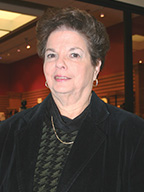 Jerre Wiggans
Jerre WiggansTruman Medical Center
With the inevitability of time, some social conventions are bound to change. Jerre Wiggans is committed to seeing that the concept of a hospital auxiliary endures—at least at Truman Medical Center, where she recently wrapped up a third consecutive term as auxiliary president. At a time when other hospitals have seen these valuable volunteer support organizations whither from declining interest, Truman officials say Wiggans has tapped into the energies of 7,500 volunteers to keep the organization strong. What’s that support look like? Try donations totaling roughly $250,000 during her three terms, plus clothing for patients in need—Truman serves the poorest patient population among any Kansas City-area hospital—layettes for every baby born at the hospital, and items sewn for patients with special surgical needs. The auxiliary’s oncology navigator program provides wigs and personal-care supplies to breast cancer patients, and the group has supported renovation of clinics and waiting areas to better serve patients.
The connection between Wiggans’ desire to serve—she also works in the hospital’s gift shop—and Truman was a bit round-about, but flowed from a lifelong interest in sports. She was an avid sports player as a youth, and grew up to join the Women’s Athletic Club, “which got me involved pretty quickly in working at Truman.” Time spent caring for an elderly uncle, she says, “gave me insight into the importance of health care.” Over time, auxiliaries changed as more women migrated to the work force, and for many working mothers, something had to give with their schedules. “It was declining, which was not a good thing,” Wiggans says. “I thrived on trying to hold it together.” The mergers of auxiliaries from the two Truman hospital campuses last year helped stabilize things, she says, and the organization has had some success recruiting new blood with an incremental pitch: “We’re just trying to entice people that you don’t have to be available all the time to do auxiliary or volunteer work,” Wiggans says, “you can be available to work on one small project, and a lot of times now, you can do away from hospital.”
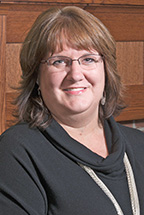 Tricia Brashear
Tricia BrashearSaint Luke’s Hospice House
For Tricia Brashear, hospice work is a badge of health-care honor: “We talk a lot about the life spectrum—you are only born once and you only die once, and we only have one shot to do it right,” says Brashear, clinical manager for Saint Luke’s Hospice House. “If we can make that transition easier at the end of someone’s life, we know we’ve done a good job. It’s what drives us every day.”
Brashear was raised in Independence, and was influenced early by starting as a candy striper in a hospital oncology unit. She earned her nursing degree from Graceland College and was a nurse case manager at the former Independence Regional Health Center for a decade before joining Saint Luke’s in 2003. Working in cancer care, when there’s no cure possible, she says, is about “finding that balance—being a cheerleader when it’s important and when patients are facing treatments, and stopping, if that’s their wish, but always to help them have a comfortable end of life.”
It’s an immensely rewarding line of work. “Almost every day, I think ‘this is why I can’t imagine ever doing anything else,’” Brashear says, even on those occasions where she’s attending the needs of people she knows. Early in her hospice nursing, for example, she cared for a dying woman—then a few years later, for her husband. “Caring for people who are also your friends is sometimes a difficult boundary, but it’s also such an honor to be there at their side,” she says. “Some of the biggest compliments we get come when we care for an entire family throughout a period of years.”
And she finds a particular inspiration in the upbeat nature of Hospice House itself, as opposed to traditional hospital or nursing-home settings for someone’s last days. “When people come in and see this place, they’re so surprised by the life that is in the halls and the smiles and celebration and joy that’s heard,” Brashear says. “That feeling immediately is a comforting spirit, and as a nurse, it’s as good as it gets”.
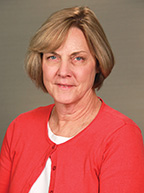 Denice Morrison
Denice Morrison North Kansas City Hospital
In nursing, the types of patients you’re seeing profoundly shape the nature of your relationships with them. Obvious example: working in a neonatal ward as opposed to, say, a cancer unit. Denice Morrison knows all about the nature of nurse-patient relationships from a couple of perspectives. “I worked in med/surg the first year out of nursing school, and in the intensive-care unit for five years,” she says. “I thought I would stay in ICU, but when I went for my BSN, I needed regular hours to do the clinical.” A good friend was a manager in the operating-room, and invited her to come on down. “I said, ‘no, I really like ICU,’ but eventually, I did it to finish school—and I loved it. I just never went back.” It’s interesting, Morrison says, “because when you were in ICU you had such intense relationships with patents and their families, and some people think that when you go into surgery, everybody is asleep. People have that all wrong: We have a very short window to create a very tight bond with a patient.” That timing is both shorter and more intimate, she says, and when “people trust us with their care while they’re asleep, I can’t think of anything more intense than that. … You’re caring for them when they can’t speak for themselves—and that’s really quite a calling.” An Independence native who saw the career satisfaction a great-aunt had as a nurse, she was fascinated by the contentment that the job seemed to bring. After getting her associate’s degree from Penn Valley, she earned her RN, then her masters, both from Graceland College, as well as certifications as an operating room nurse and in surgery-center administration. Many patients, she says, come out of OR without knowing who cared for them, and it’s a powerful moment when someone who has recovered makes a trip back just to say thank you for their care. “That’s always a very emotional time,” says Morrison. “You don’t hear as much of that in OR as you do in the ICU, so when it does happen, it’s really special.”
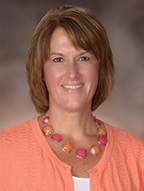 Sandy Gilbertson
Sandy Gilbertson Mosaic Life Care
A few years ago, Sandy Gilbertson was shopping for eyeglasses when a woman approached her with a young boy in tow. “You probably don’t remember me,” the young mother said. “You only took care of me once when I was a teenager who was confused, scared and… pregnant.” Gilbertson, she explained, sat with her “like you didn’t have a million other things to do, and helped me realize how precious the life inside of me was,” the woman told her. “You gave me the strength and the courage to keep my baby, and here he is today!”
That memory, says the pediatric nurse practitioner for Mosaic Life Care, “gets me up in the morning.” “In nursing, you just never know who God is going to put in your path, or how you are going to influence their lives.” “In my case, that one little life made it all worthwhile.” Given her background, it would have been a surprise had Sandy Gilbertson chosen any other line of work: “My mother, grandmother, and sister were all nurses,” she says, “so I’m pretty sure there was never a time when I didn’t know that I would also become a nurse.” She started her career as a staff nurse in a small community hospital, eventually moving into pediatric nursing. “By the mid-1990s, things began to change, and I saw my inpatient pediatric population begin to dwindle,” she says. “I knew that if I wanted to continue to care for children, I needed to go where they were: outpatient. So I went back to school to become a pediatric nurse practitioner.” That position allows her, she said, “the freedom to pursue special interests and develop projects around topics that intrigue me,” in particular, the prevention, early recognition and treatment of childhood obesity. After she went back to school to earn her doctorate in nursing at age 50, she said, “people asked me, ‘Why didn’t you just become a real doctor?’ To which I reply, ‘because all I ever wanted to be was a nurse.’”
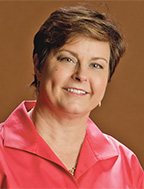 Susi Snyder
Susi Snyder Saint Luke’s Hospital
The markers were plentiful early in Susi Snyder’s life: Two sets of grandparents and great-grandparents close to her parents’ home in Independence, which helped instill a deep respect for her elders. A family-business work ethic and a father who encouraged her to seek out what she loved doing. Even that fill-in-the-blank assignment back in first grade: My name is: Susan. I am afraid of: Grizzly bears. I like to read about: Bodies the insides. “I feel fortunate,” the grown-up, bear-fearing Snyder says, “to have always known I wanted to be a nurse.” She earned her BSN from the University of Missouri-Columbia in 1984, just ahead of big advances in cardiac care. “The Mid America Heart Institute at St. Luke’s Hospital was newly built, and I wanted to be a part of the action,” Snyder says of her road to the cardiovascular operating room. “Most of us are adrenaline junkies enjoying the intensity, cohesion and ultimate goal of giving great care,” she says. In that setting, she’s part of a small community of co-workers who have been there as long—longer even—than she. “I consider them family for several reasons,” she says. For one, the long hours spent together. Another is that each must depend on the talents of others to produce successful outcomes. And, she says, “you love your co-workers, but you may not always like or get along with them on occasion—just like real families!” She’s balanced career with an active parenting role while her two sons were in athletics and the Boy Scouts, and she would even work charitable health-care efforts into the family’s annual Cancun vacation schedule. Her job, though, fills a special need, and not just for her patients. “I feel privileged to be able to connect with patients and their families, giving them care and comfort during what can be a very frightening time,” Snyder says. “We all crave human touch, warmth, caring and to feel that we’ve been heard. … One of the simplest pleasures is truly listening to another person.”
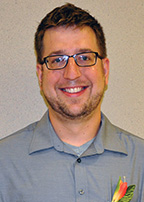 Jordan Reilly
Jordan Reilly Mosaic Life Care
Jordan Reilly’s nursing career is the result of a classroom comeback. “I wasn’t a very good high school student,” he confesses, “so about two years into college, I decided I should do something. I had good grades by then, but didn’t know what I wanted to do. I was good in science and biology, things of that nature,” so nursing seemed like a way to build on those interests.
That’s worked out well not just for Reilly, but intensive-care patients at Mosaic Life Care’s medical center in St. Joseph. “What makes Mosaic’s ICU interesting,” he says, is that while ours is smaller, we get those kinds of patients, but also take a little bit of everything. In ICU, that keeps things interesting. I work with post-operative open-heart patients, do the charge nurse some days, or the ICU resource nurse duties some days. Just about anything that comes through the door.”
He’s a St. Joseph native who earned his degree at Missouri Western State University, where his class offered evidence that the nursing profession is witnessing a gender rebalancing. “I wasn’t the only male in my class,” he says. “There were four or five others, but we never really thought too much about that. It was obvious we were going to school for a profession dominated by women, but I never felt like I was doing anything too pionereering.” His work in ICU intrigues him because, he says, “it requires a lot more focus on that patient. You’re seeing them at a 1:2 ratio vs. 1:4 or 1:5 that you get on the floors.” And the varieties of tasks are more demanding: “When someone is extremely sick, that requires a lot of thinking about multiple meds or drips or ventilators, or things going on with respirators,” Reilly said. “It’s more time to focus on the patients and their families. You’re taking care of people who are probably having the worst day of their lives, so you want more time to focus and think about what’s needed.”
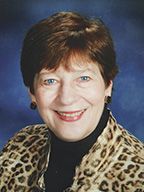 Mary Calvert
Mary CalvertNorth Kansas City Hospital
Some people are called to nursing careers; Mary Calvert’s impetus was her best friend since their seventh grade days in Brunswick, Mo. “I originally went to Northeast Missouri State to be a social worker,” says Calvert. “But after my first year, Gloria decided we should be nurses. Well, I’d had open-heart surgery at age 11, and that didn’t endear me as something I wanted to do.” But the argument for a career path in which jobs were always plentiful proved too hard to resist, and the pair enrolled together at Research College of Nursing.
In 1974, Calvert took a job at North Kansas City Hospital instead of a position in Smithville because, Calvert says, “It paid $3.95 an hour, and the Smithville job paid $3.90. I hope North Kansas City feels like they got their nickel’s worth out of me.” She went on to get her BSN at Avila University, and earned her oncology charge nurse certification, setting the stage for a 26-year stint in orthopedics-related work before wrapping up her career last Oct. 30. “I got the BSN because I didn’t want any doors closed in my face, but I never aspired to be a head nurse or supervisor,” Calvert says. “I wanted to maintain bedside nursing—I felt it was my strong suit.”
Charge-nurse duties, she said, were the perfect in-between. She could still attend patients, but she also liked the certain amount of authority that came with it: “As a first-born girl, I was just naturally bossy,” she says, flashing the self-deprecating humor that made her a popular figure at the hospital. She also has been a dynamo for extracurricular causes—she’ll be making her 19th annual medical mission trip to the Dominican Republic this month—and she’s lent her time and talents to fund-raising walks, Meals-on-Wheels deliveries and even in retirement, returning to the hospital to distribute communion as a Eucharistic minister each week.
As for retirement? No big plans just yet, she says. “I’m just so happy to be free to help my daughter with her three sons.”
 Jean New
Jean New John Knox Village
A little more than a decade ago, Jean New moved to John Knox Village to start the next phase of her life in retirement. But a retirement lifestyle alone wasn’t in the cards. “I spent 40 years as a nurse at Saint Luke’s Hospital on the Plaza, so I think that doing things—seeing a need and trying to fill it—comes naturally to me,” New says. “I just can’t help it.” And she’s helped fill various needs with nearly 7,000 volunteer hours and a spirituality that’s reflected in the many tasks she’s taken on. Among them, officials say, have been service as president of her apartment building, organizing pot lucks, picnics and pizza parties for the residents, then taking on a unofficial leadership role to help steer residents to information about life at John Knox. When some expressed interest in Bible study, New started a group for that. When others asked about a worship service in their apartment building, across the campus from the Village Chapel, she started that, too. When the chapel staff needed someone who could make sure the building was ready for the weekly worship services, New was a part of that solution, as she’s often been with resident council and other civic meetings, game-night activities, the retired nurses group, health services and the sewing group. She also led a group that knitted or crocheted prayer shawls for people facing physical, spiritual or emotional challenges, whether they’re Village residents or recipients aro-und the world. “I had a closet the size of a small bathroom, and it was packed with yarn,” New said. “Not long ago, I moved to a different apartment at the Village, and the movers had quite a job dealing with all of that!” In a classic example of what-goes-around-comes around, she received her own shawl after a cancer diagnosis in 2014. “They told me the lumpectomy and radiation treatments would make me tired, but it didn’t slow me down at all,” New said. “I was blessed. Mostly it was just an inconvenience, because I had to miss or be late for meetings!”
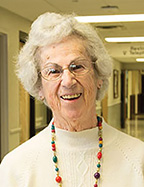 Mary Moser
Mary Moser Olathe Medical Center
Like many who approach retirement looking for new purpose to fill those free hours, Mary Moser decided to chip in a day a month working for the hospital in town, back in 1979. And, like many who find new fulfillment in that service, it hooked her. It would not be a once-a-month commitment for long. More than 35 years after that first shift, Moser has compiled a staggering 30,000 hours of volunteer time, making her face a familiar one around Olathe Medical Center. You’re likely to find her in the day-surgery unit almost every morning, assembling charts and running errands for the surgery staff, tasks that nurses in that unit say have proven invaluable. The patients, as well, have found a connection with a familiar face in that setting. “I have had many patients say they like me to be working in the DSU,” Moser says. “They say they feel like I am one of them, and not uniformed staff.” She’s also a key figure for the small army of volunteers who support the hospital’s mission. She served a pair of terms as president of the volunteer Ambassadors group, starting a weekly breakfast that do more than connect volunteers—hospital officials say the gatherings are motivation for volunteers (many of whom have lost a spouse) to start socializing again A native of Aberdeen, Md., Moser developed a taste for service while her husband’s military service took them to various postings. “We ended up in several locations,” Moser says, “The most interesting were the overseas locations. I worked with Army Community Service, helping families get settled in their new assignments. I also worked a short time until we got reassigned. I enjoyed helping others.” Those duties provide a solid foundation for what was to come. “I enjoy trying to help others—nurses, doctors, patients and fellow volunteers,” she said. “Since my husband retired (from both the military and civilian sectors), we have had more free time to let me volunteer here. I really enjoy the nurses and the patients in the DSU.”
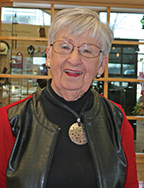 Marge Moran
Marge MoranTruman Medical Center – Lakewood
At 82, Marge Moran has retired—twice. The first came after a career that saw her work for Hallmark Cards for 20 years, then jump into entrepreneurship to lead her own Hallmark store and 50 seasonal shops around the Midwest and South, peaking at $4 million in annual revenues. The second retirement came after a stint as manager of the Truman Medical Center Lakewood’s Auxiliary Gift Shops. And yet you can still find her there as a volunteer, often for 30 hours a week, hospital officials say. Moran is closing in on 7,000 volunteer hours at TMC-Lakewood, the two-facility system’s eastern Jackson County campus. There, you’ll find her arranging displays, marking merchandise, delivering products she’s purchased on buying trips and—this is a specialty—converting those who step in and “just want to look” into cash-paying, and loyal, customers. “I think of the business as doing two things,” Moran says. “It’s a respite for both patients and staff, a happy spot to get away from the trials of the moment. And it helps provide funds to support the working areas of the hospital. We not only sell snacks and stuff, we often ‘listen’ and offer comfort.” She’s also known for the shop’s Midnight Madness sales, even logging 18-hour days to ensure their success. She ran the shop for three years, which allowed her to work closely with a larger group of volunteers, and to become more engaged in the hospital’s auxiliary, serving four years as its president. “I am a passionate believer in the value of hospital auxiliaries,” Moran says, because of the support they provide. During her own term as president, she says, “our fund-raising grew dramatically and we have successfully contributed funds for a new birthing center, a dental coach who serves in Independence, and recently the purchase of medical equipment for the anesthesia department and women’s health.” Officials say the auxiliary’s 2015 donation to the hospital for patient programs and capital equipment was $121,000. “No lifetime accomplishment,” Moran declares, “has given me more personal satisfaction.”
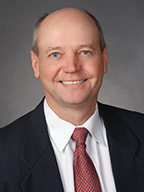 Richard Miles
Richard MilesGovernment Employees Health Association
Health care, says Rick Miles, is like a three-legged stool: the patient as one leg, the direct providers of health care are another. “The financing of health care is the third leg,” he says. “Without all three working together, it doesn’t work.” His contribution to health care, then, was stabilizing that third leg for Government Employees Health Association. By the time he retired last spring, GEHA had grown to provide coverage for more than a million lives worldwide with its suite of health and dental insurance plans for government employees and retirees. He left behind a non-profit organization that he says is extraordinarily focused on providing value to members. “We needed to make a profit to stay in business,” Miles says “but it was not a big part of how we measured success. I took great pride in our efforts to make health care affordable and in myriad of programs we offered to help our members get the right care and to take greater ownership of their health.”
Miles grew up in Atchison, attended Maur Hill Prep, then earned a degree in business from K-State, with an emphasis in accounting. Night school at UMKC led to an MBA in finance, fulfilling parental guidance that he and his eight siblings work hard and get an education. In 1983, working in public accounting, a client organization offered him a job as corporate controller, and his career with GEHA began. The plan wasn’t to become CEO; instead, he says, it was a natural progression. I enjoyed taking on new challenges and luckily I had some bosses that were good mentors and believed in me.” There is much to lament in the world of regulated health-care finance these days, but Miles is confident that GEHA is well-positioned to deal with the challenges. “I felt that I left GEHA with a very strong management team that should be able to adapt to any changes that should occur,” he says. “GEHA and the industry face lots of challenges, and my hope is that the legislators and regulators start viewing the health insurance industry as part of the solution and not part of the problem.”
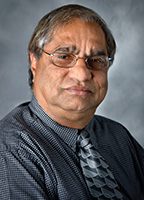 Daljeet Singh
Daljeet Singh HCA Midwest Physicians
His grandfather died before Daljeet Singh was born, but had left instructions with the baby’s father: “He told my dad that his first son needed to be a doctor, right from the beginning.” So a career in medicine was virtually fore-ordained for young Singh, but it wouldn’t unfold in his home of Arungabad in west-central India. The newly minted doctor made his way 8,300 miles to the Kansas City region, where a cousin was working in 1977, and soon had a job offer from the Missouri Department of Mental Health.
The rest is family-care history in the Kansas City exurbs of Lafayette County. After 11 years with the department, Singh started as a family-practice physician, and he still marvels at the way the community has embraced him. “I had never lived in a small town before,” he says. “I was a foreigner, but the local people adopted me and I do what I can to pay them back. In 40 years, I have never had to shovel my drive—people take care of their doctor.”
He’s been chief of staff at Lafayette Regional Health Center, medical director for Higginsville Habilitation Center, president of the Lafayette-Ray County Medical Society, and president of the Rotary Club. He’s also the current elected coroner for Lafayette County, in addition to his role as a health-care provider.
The health-care challenges of communities in rural areas differ somewhat from the urban settings, but especially in the age of the patient populations: Younger people continue to migrate to cities, leaving the older ones behind. “They are getting older, and their needs are becoming more difficult” Singh says. “We don’t have enough long-term care beds. Families face the reality that when these people get old and they have money, they don’t qualify for Medicaid, but it’s not enough for nursing-home charges. We see
that every day, and something needs to be done in that respect.”
 Carol Thies
Carol Thies University of Kansas Hospital
Her father started working at the Santa Fe Railroad when he was a teenager and stuck with it until he retired. Maybe, says Carol Thies, that brand of loyalty is what keeps her chugging along with her nursing career at KU after 43 years there. “I live in Olathe, and people say, ‘Carol, you must drive by four hospitals on the way to KU. Why do you stay?’” she says. “I do it with intention, because I love the place where I work. When you think about the growth and the changes over the years here, the first 25 years, things didn’t change a lot, but the last 15 or so, oh, my goodness the change in patient care has just been phenomenal.” And she’s delighted to be a part of that ongoing change as patient-representative for the hospital. When you’re admitting 30,000 people a year and shuffling them around a 750-bed campus, coordination is key, and she’s there to safeguard the interests of patients, no matter how big or little the concern.
Her interest in health care ran back to childhood in Wellington, Kan., where her mother was a Girl Scout leader. Work on a health-care badge entailed time for volunteer work at the town hospital a block from home, and young Carol leveraged that into a job as a candy striper at a handsome 50 cents an hour. “When I got to 75 cents, I thought I was rich,” she says. “But I loved what I did, and thought I’d really like to be a nurse.”
One of the most memorable experiences she’s had entailed the plight of a family passing through Kansas City when the father fell ill and spent weeks in the hospital. A year after his recovery and discharge, he returned to the hospital to properly thank everyone who had been involved in his care. “He looked fabulous,” Thies recalls, and I thought, this is why I do what I do: The rewards for why we’re here and what we do and giving people back to their families and their lives—that’s special.”